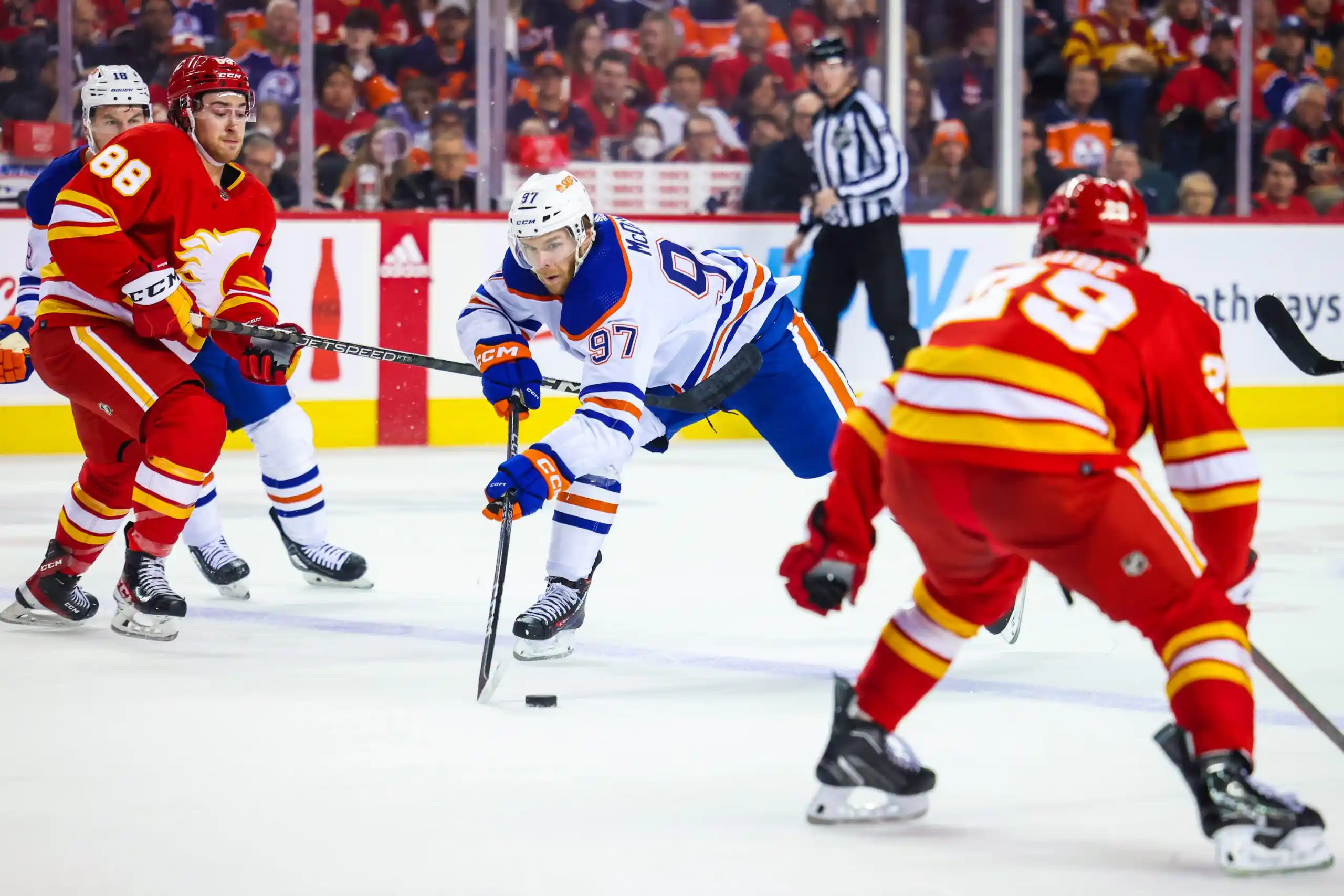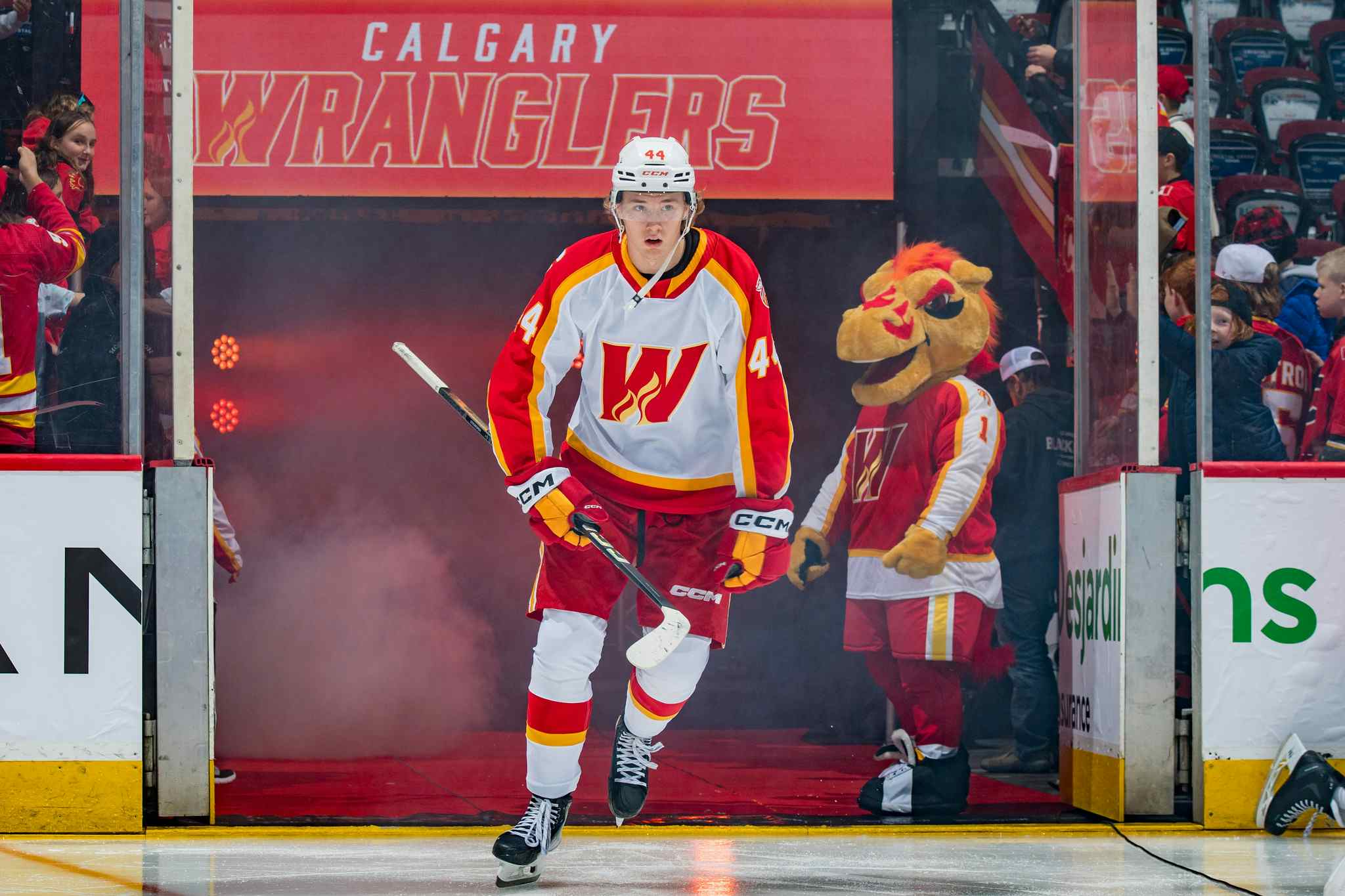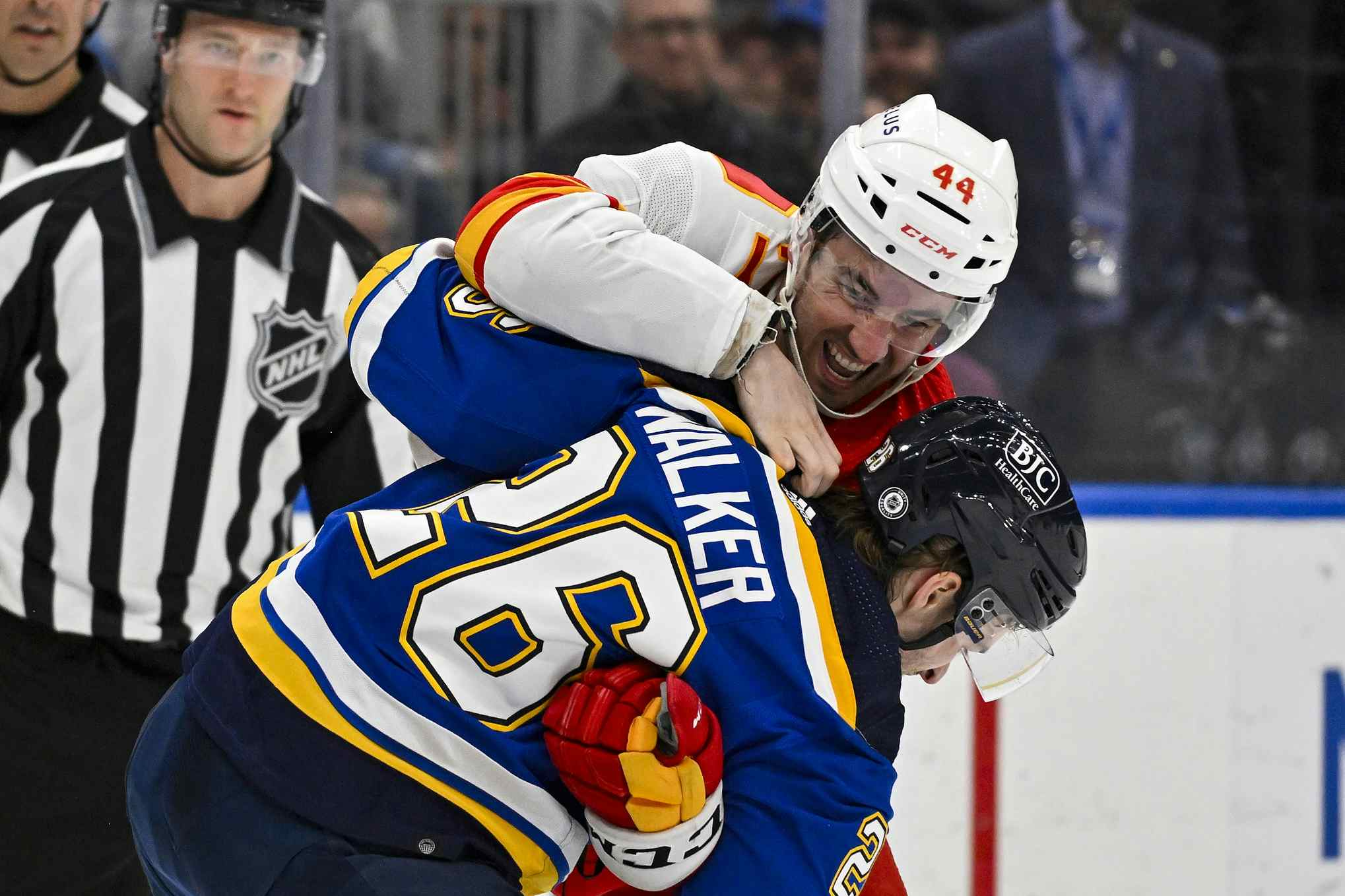Converting prospects to assets

The formula above is math, which means it’s scary and might as well be cyrillic. The Calgary Flames are working on a formula of their own, because they have an interesting job on their hands. The Flames have a really solid number of decent prospects, which they should be given credit for. Now the challenge is identifying which of those players they want to have move columns. Let’s face it, Calgary now has to move a few players who were once organizational prospects into a different category: organizational assets.
To do this, however, isn’t necessarily an easy or desirable thing. Teams hate it as much as their fans do when a former prospect goes elsewhere and has success. It stings, it sucks, and it makes you wonder what could have been. But properly choosing which prospects to keep and which ones to deal is what high end, championship level teams do. If the Flames want to get there, they’ll have to do the same thing.
The reasons

As a Flames fan, I can totally understand why you still clutch your prospects tight to your heart. For the longest time, well, there were none. But there are reasons, three of them in fact, why this has to be done for your team to get better and move forward.
1. Not everyone can play
What winning team is made up of entirely young, inexperienced players? I can’t think of any, to be honest. Even the 2010 Blackhawks had veteran, proven talent like Marian Hossa, John Madden, and Brian Campbell. Winning teams have a mix of players of different ages as the three winning Chicago teams would attest to. For every young Patrick Kane, Jonathan Toews, Duncan Keith, and Brent Seabrook (in 2010 anyway), there are more experienced players to go along with them.
So, from a Calgary perspective, yeah there’s a lot of prospects, we get that. The fine folks here at FlamesNation are putting together a top 20 ranking of prospects right now, and we can be excited about some or all of them. But if all 20 player, well, then where does Mark Giordano fit in? Or Matt Stajan? Or even younger, but more proven, players like Mikael Backlund and Michael Frolik?
2. You need assets to make important trades
Just having a good core of players doesn’t make you a Stanley Cup winner. Having a good, homegrown nucleus is the most important part of building a championship team, of course. But to truly get to that title winning level, GM’s also have to supplement their core by adding proven, older talent. You can do that two ways. The first is free agency, ala Hossa in Chicago. The second is via the trade route.
In almost every situation, adding a proven player on a high end team means giving up organization assets. Draft picks are big, but prospects who have already started to progress beyond their draft year are equally a crucial. He may not be a top flight player anymore, but the 2012 LA Kings likely don’t win a Stanley Cup without Mike Richards. Well, they wouldn’t have Richards if they weren’t willing to deal Brayden Schenn. In lots of cases, being willing to part with a prospect allows you to make your team better in the immediacy. When trying to win a title, sometimes you have to do that.
3. Draft picks don’t cost money
The Flames are facing a difficult cap situation in the next few years, we all know that. Well, one thing that won’t affect their cap right away is more draft picks. Yeah, eventually if those players turn into NHLers, your cap is affected. But in the short term, you don’t pay cap dollars for a draft pick, which is important for Calgary.
Sven Baertschi is a really solid example. Whether you’re happy he’s gone or not, or whether you like the circumstances or not, the Flames did get a decent return for him. If Brad Treliving doesn’t have that extra pick, he’s not in as good a position to be as flexible as he was at the 2015 Draft. Remember, trading players for picks doesn’t only apply to prospects. Calgary needs to be prepared and looking to do this with roster players right now, too.
The candidates
So who are potential Flames prospects who could now be considered assets? The recent emergence of players like Sam Bennett, Johnny Gaudreau, and Josh Jooris and additions like Frolik have shifted some other players to different columns. Here are three examples that I think fit the bill.
Markus Granlund
This one makes the most sense for me. Even though he’s seen some NHL time over the last two years, I still consider Granlund an organizational prospect. At the age of 22, he’s seen time down the middle at the highest level and has produced at a very nice level in the American League. Granlund’s biggest problem now is the position he plays, unfortunately.
It sounds really crazy to say, but Calgary is really deep at centre right now. Sean Monahan is a stud, Bennett is going to be a really good pivot too, and Backlund just signed a new contract. After that, you’ve still got Stajan, Jooris, and Joe Colborne at the NHL level not to mention Drew Shore and Bill Arnold a little further down the ladder.
Where the heck is Granlund going to fit? The Flames haven’t seemed open to trying him on the wing, so it looks like centre is where they see him projecting. I think other teams would be interested in Granlund. He’s young, he’s got offensive upside, and he’s still progressing.
Bill Arnold
Arnold would be in much the same camp as Granlund. There’s a lot of centre depth and it is hard to imagine where he’d fit in in the long run. Arnold might not necessarily have the same pro cache as Granlund does right now, mainly because he only has one season under his belt. But what Arnold does possess is some name recognition.
Remember, Calgary’s 2010 fourth round pick played on the most productive line in college hockey just a few years ago with Gaudreau and New York’s Kevin Hayes. Scouts and hockey people know him and have seen him play, so there might be some marketability there.
Ty Wotherspoon
This one is a little more difficult for me, because I’m a huge fan of Wotherspoon. I’ve really enjoyed how he’s progressed since being drafted in 2011, and I think he’s got a chance to be a full time NHL defenceman. The problem for him is, stop me if you’ve heard this before…all those bodies.
The Flames just added Dougie Hamilton to the fold via trade, which made an already deep NHL blueline even deeper. I get it, there are potential established names who could leave in the near future, but that doesn’t change the fact that Calgary has some decent depth on the back end now, too.
Remember, the Flames drafted three more d-men in 2015 including two fairly promising ones. On top of that, Ryan Culkin looks to have really improved his stock with Brett Kulak and Pat Sieloff still in the fold, as well. Wotherspoon has played in the NHL, even a cameo in the playoffs, and impressed on the World Junior stage as well. Teams would most certainly be interested in him.

I know, I know, even the discussion of trading away prospects is borderline blasphemy for some Flames fans. But they can’t all stay! I’m not advocating to move every single one of the guys I just identified. Hell, I’m not even saying trade them for the sake of trading them. But Calgary is now at a point where they have a nicely stocked cupboard. They’re also at a point where they want to get better and challenge for a title in the next few years. To that to happen, it’s very likely a prospect or two is going to have to move, as much as it might hurt.
Recent articles from Pat Steinberg





